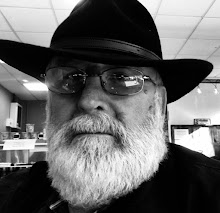There has been a 4% drop in the total number of people in treatment for drug use with the number of young adults needing treatment for heroin down nearly two-thirds compared with 2005-06.
The over-40s now make up 31% of all adults in treatment. Home affairs editor, Alan Travis writes:
The over-40s are now the only age group whose numbers going into drug treatment are still going up and they now account for almost a third of the 197,000 adults in the programme in England and Wales.
Paul Hayes, the NTA chief executive, said they were mainly people in their 40s and 50s who had been using heroin and crack since the epidemics of the 1980s and 1990s and whose health was now seriously deteriorating. This has been reflected in a sharp rise in drug-related deaths among over-40s over the past decade from 504 in 2001 to 802 last year.
Less than 200,000 people in England were being treated for drug use in 2011-12 compared with 210,815 in 2008-09. The average time for treatment is also down with a five day waiting time now rather than the 9 week average waiting time in 2001. The latest figures published by theNational Treatment Agency for Substance Misuse (NTA) show results produced by Manchester University National Drug Evidence Centre(NDEC) from data collected by the National Drug Treatment Monitoring System (NDTMS).
Collecting data on the number of adults on a structured drug treatment in and in contact with drug treatment agencies and general practitioners in England in 2011-12, the numbers shows some key trends in drug treatment.
Main drug of misuse
Opiates and crack cocaine were the most frequently reported drugs of misuse - 84% of adults in treatment cited either one of these. Cocaine powder was reported by 5% of adults and Cannabis was recorded by a further 8%.
Age and gender
The median age of clients who were at their first point of contact in their latest treatment journey in 2011-12 was 35 years old. Over 70% of clients in treatment were male whilst just over 30% of women were aged under 30 years old. There number of over-40s in treatment (61,695) has risen and the age group now makes up 31% of all those in treatment.
Source of referral into treatment
Self referral (40%) was by far the most common source of referral into treatment. Arrest referral and Drug Interventions Programme (DIP)made up 13% whilst GP referrals only accounted for 6%.
Waiting times for treatment
Of the 68,218 first interventions beginning in 2011-12, 97% began within three weeks of referral. For those referred to start another type of treatment, 97% of people began treatment within three weeks.
Treatment type
Over three quarters of people (76%) received prescribing including key working whilst 28% received psychosocial interventions. Over 1,000 people received residential rehabilitation.
Treatment exit
Of the 63,020 adults aged over 18 years old who left treatment during 2011-12, 47% were discharged as a Treatment Completed - meaning the person had completed treatment, was free of drug of dependency and not using either heroin or crack cocaine. The average length of time to complete treatment was 16 months. There were 13,499 people that dropped out or left their treatment and 641 saw their treatment withdrawn.











Post a Comment
Post a Comment